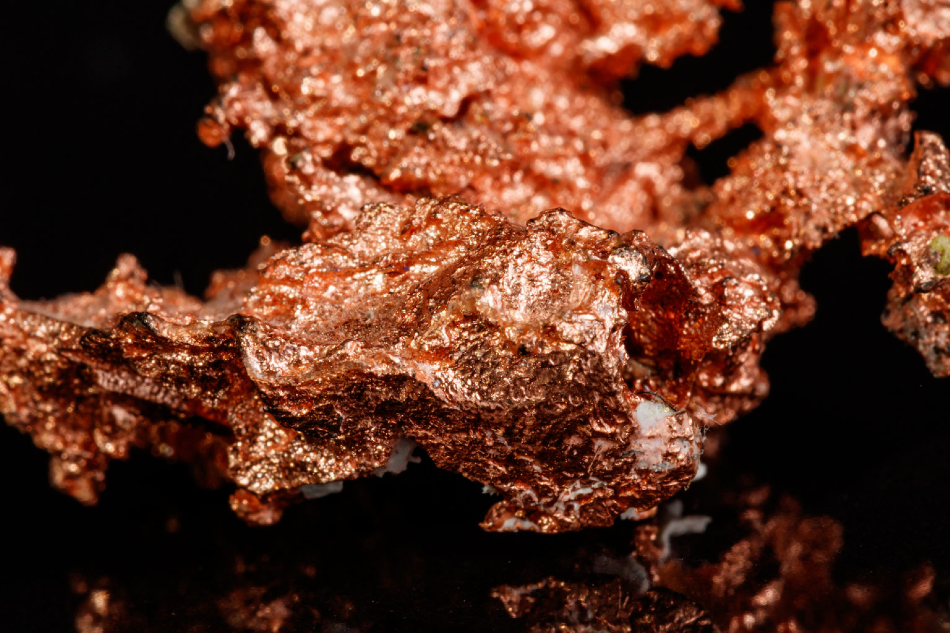Jul 20 2020

A close-up of a piece of copper ore. Image Credit: Cold moon Photoproject/Shutterstock.
Researchers at Lawrence Berkeley National Laboratory (Berkeley Lab) and Caltech have explained that copper previously bound with oxygen is better at transforming carbon dioxide into renewable fuels compared to copper that was never bound to oxygen.
As part of the study, which was recently reported in the ACS Catalysis journal, the researchers carried out X-ray spectroscopy on prototypes of working solar fuel generators.
This was done to show that catalysts made of copper oxide are better than purely metallic-origin catalysts at synthesizing ethylene, a two-carbon gas with enormous industrial applications—even if no noticeable oxygen atoms are left in the catalyst.
Many researchers have shown that oxide-derived copper catalysts are better at making fuel products from CO2; however, there is debate about why this occurs.
Walter Drisdell, Study Co-Leader and Chemist, Lawrence Berkeley National Laboratory
Drisdell is also a member of the Joint Center for Artificial Photosynthesis (JCAP). The goal of JCAP is to design efficient, solar-powered technologies that can transform atmospheric CO2 into alternative fuels for petroleum. Drisdell and his collaborators consider their findings are essential to progress toward that goal.
According to Drisdell, under operating conditions for producing fuel—where CO2 is initially converted into carbon monoxide and then hydrocarbon chains are developed—the copper-bound oxygen is depleted naturally in the catalyst.
But a few scientists consider that little amounts of oxygen stay in the metal structure and that this is the source for enhanced efficiency.
To find a solution to the debate, a gas chromatography (GC) system was brought to the X-ray beamline so that they could detect ethylene production in real-time.
Our collaborators from Caltech drove the GC all the way from Pasadena and installed it at the X-ray facility in Palo Alto. With it, we showed that there is no correlation between the amount of oxygen (‘oxide’) in the catalyst and the amount of ethylene produced.
Soo Hong Lee, Study Co-Lead Author and Postdoctoral Researcher, Lawrence Berkeley National Laboratory
Lee continued, “So, we think that oxide-derived catalysts are good, not because they have oxygen remaining while they reduce carbon monoxide, but because the process of removing the oxygen creates a metallic copper structure that is better at forming ethylene.”
Moreover, the researchers demonstrated that though the efficiency of oxide-derived catalysts wanes over time, it can be frequently “reactivated” by re-adding and re-removing oxygen at the time of an easy maintenance process.
The next step for the researchers is to develop a fuel-generating cell that can function with X-ray scattering instruments, enabling them to directly map the varying structure of the catalyst while it transforms carbon monoxide into ethylene.
In addition, the research team included Ian Sullivan and Chengxiang Xiang from Caltech, and David Larson, Guiji Liu, and Francesca Toma from Berkeley Lab. This study was financially supported by the U.S. Department of Energy (DOE) Office of Science. JCAP is a DOE Energy Innovation Hub.
Journal Reference:
Lee, S. H., et al. (2020) Correlating Oxidation State and Surface Area to Activity from Operando Studies of Copper CO Electroreduction Catalysts in a Gas-Fed Device. ACS Catalysis. doi.org/10.1021/acscatal.0c01670.